Kranjska Gora & The Julian Alps
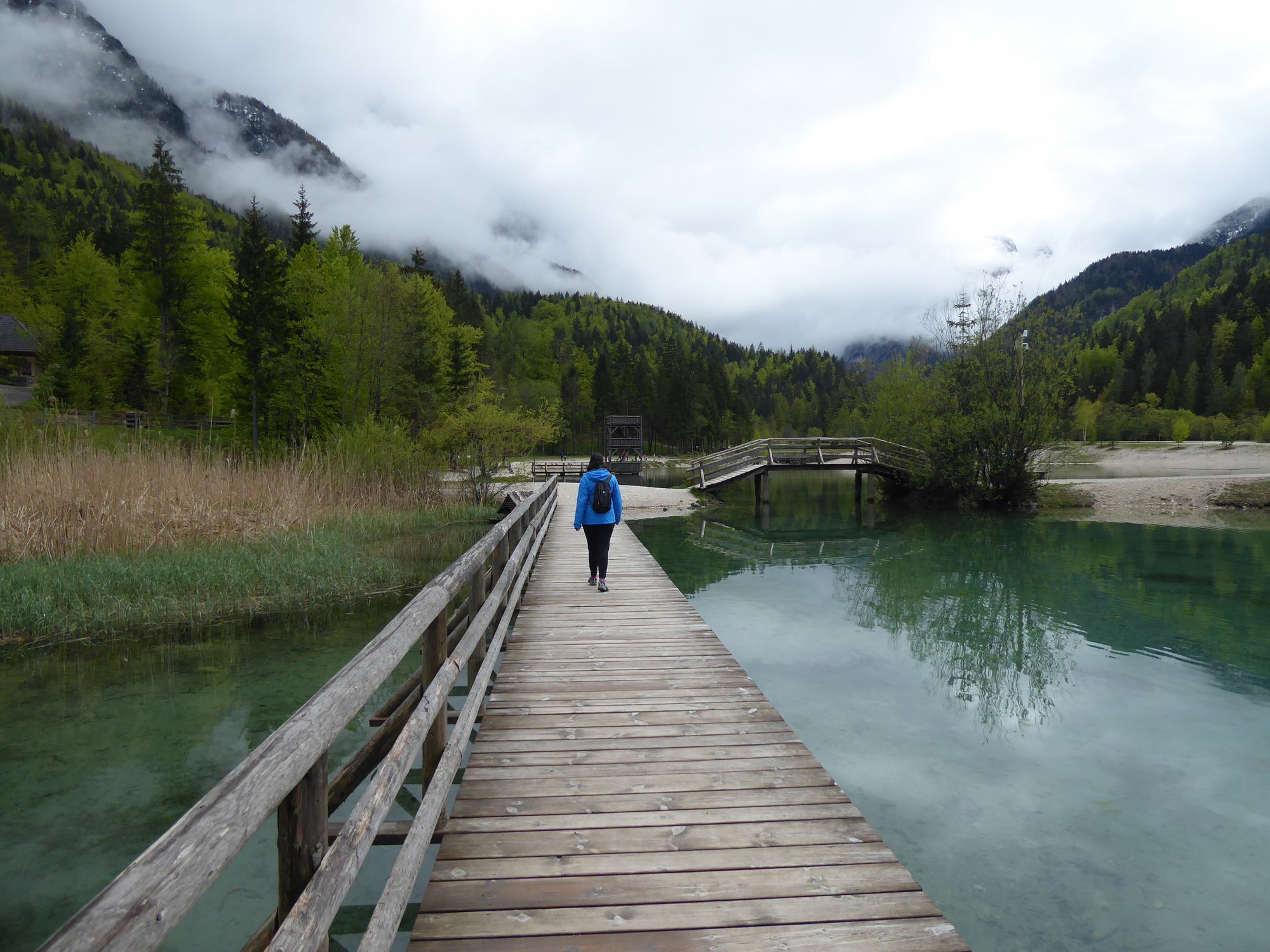
It was when the waitress brought out the lard on toast that I knew I was going to like Kranjska Gora.
We had arrived on a grey and drizzly day in the Julian Alps, and a TripAdvisor tip-off had directed us down a narrow street to Lačni Kekec, a little log cabin restaurant at the foot of a deserted, out-of-season ski slope. In winter this place must be packed full of après-piste revellers steaming up the windows, but in the middle of May we were practically the only customers.
This was where we had our introduction to zaska, a smoky spread made from minced bacon and lard, delicious smeared over bread. Zaska is prized in the mountains for its fortifying qualities, charging you up with energy for the day ahead. Or so we kept being told, each time it was served to us as an appetiser before breakfast, lunch or dinner.
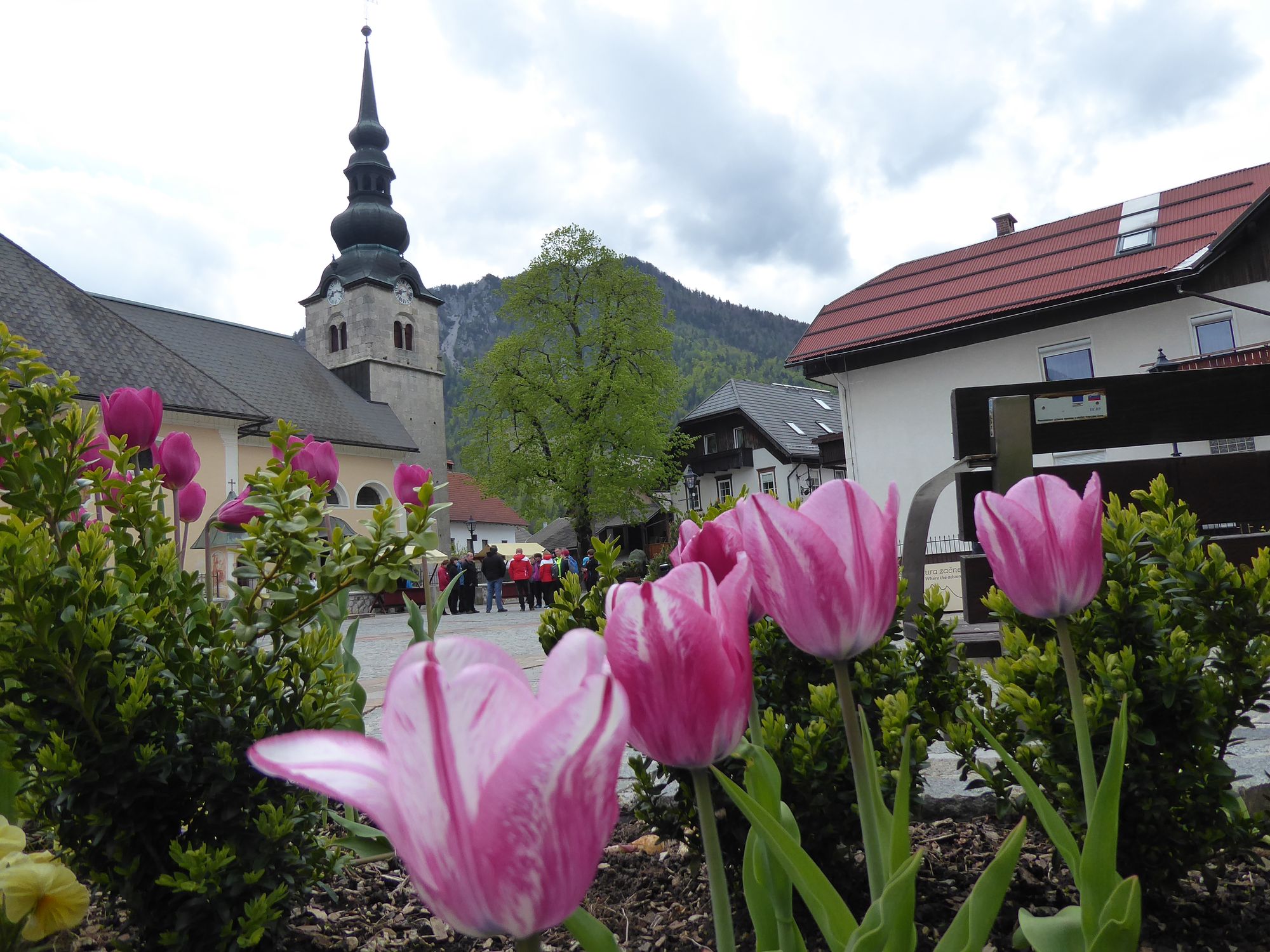
Kranjska Gora
Kranjska Gora is tucked away in Slovenia's north western corner, close to the border with Italy in the west and Austria in the north. We stayed in a characterful little hotel just outside the town, overlooking beautiful Lake Jasna and surrounded by forested foothills. There is not an awful lot to do in Kranjska Gora outside of the ski season - a handful of streets to wander, a pretty church, a few souvenir shops - and we mostly used it as a base for exploring the mountains.
After checking into our hotel we took a walk around the lake, just as the clouds began to melt away and the sun finally came out. The snow-dusted mountains crowding the horizon were reflected in the glassy stillness of the water, and a steady trickle of tourists pulled off the road to pose for photos in front of the statue of Zlatorog, a legendary golden-horned ibex said to have guarded these valleys in times gone by. The colours of the lake were hypnotic in the full glare of the sun; it was one of those places where you could spend hours just staring at the scenery.
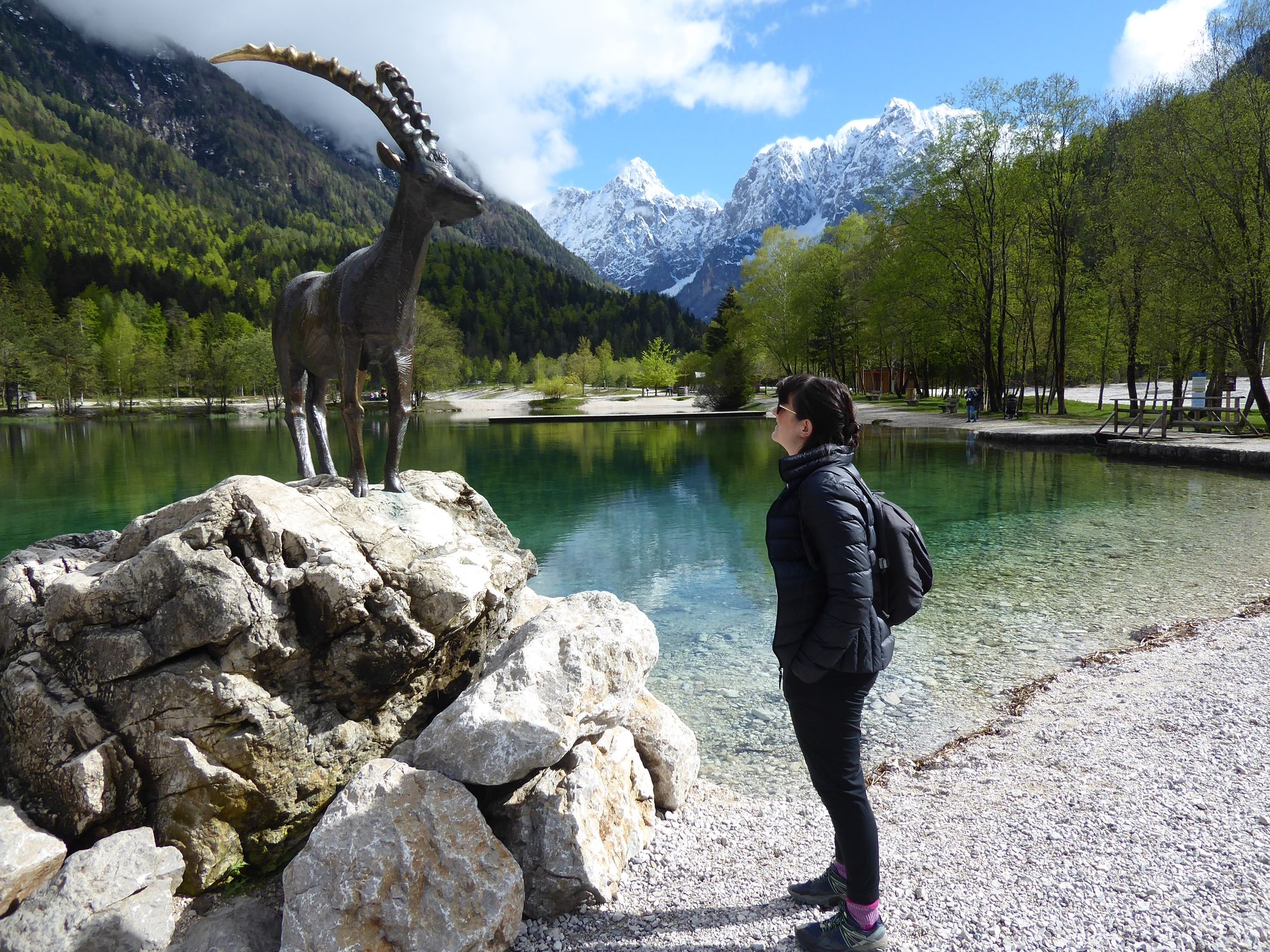
On the shores of the lake we enjoyed one of the best meals we had anywhere in Slovenia, at an unassuming little guesthouse called Milka. The flickering lights and dated decor gave the restaurant something of a Grand Budapest Hotel vibe, and the earnest demeanour of our waiter initially came across as a little cold. But the tasting menu that followed was incredible: beetroot bread with lentil tartare, asparagus soup with wonderfully tender trout, followed by succulent roast lamb and a moist orange polenta cake with homemade ice cream. It was one of those meals that tastes all the better for taking you completely by surprise.
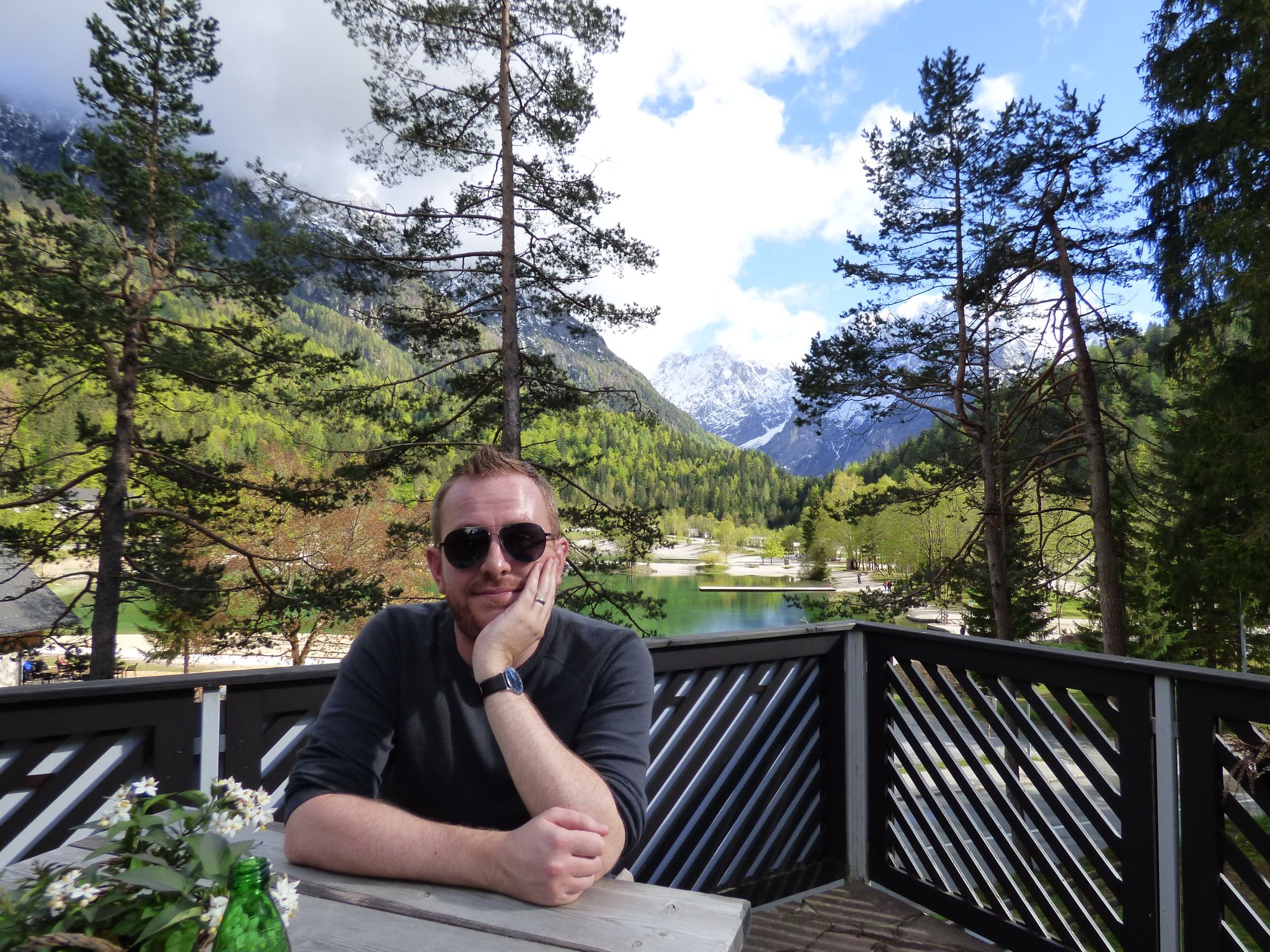
Tromeja: The Triple Border
The next day we took a short drive west from Kranjska Gora to Rateče, the last village before the Italian border. This part of Slovenia is criss-crossed by hiking trails, and we decided to devote a day to Trail 18, which winds its way from Rateče up to the top of Tromeja, a 1,508-metre mountain at the meeting point of Slovenia, Italy and Austria.
Our walk began at a gentle pace, crossing an alpine meadow speckled yellow with dandelions. The sun was shining again and the views across the valley were spectacular, the serried peaks of the Julian Alps like a backdrop from The Sound of Music. We passed a couple of locals coming back down the track, the last people we would see for several hours.
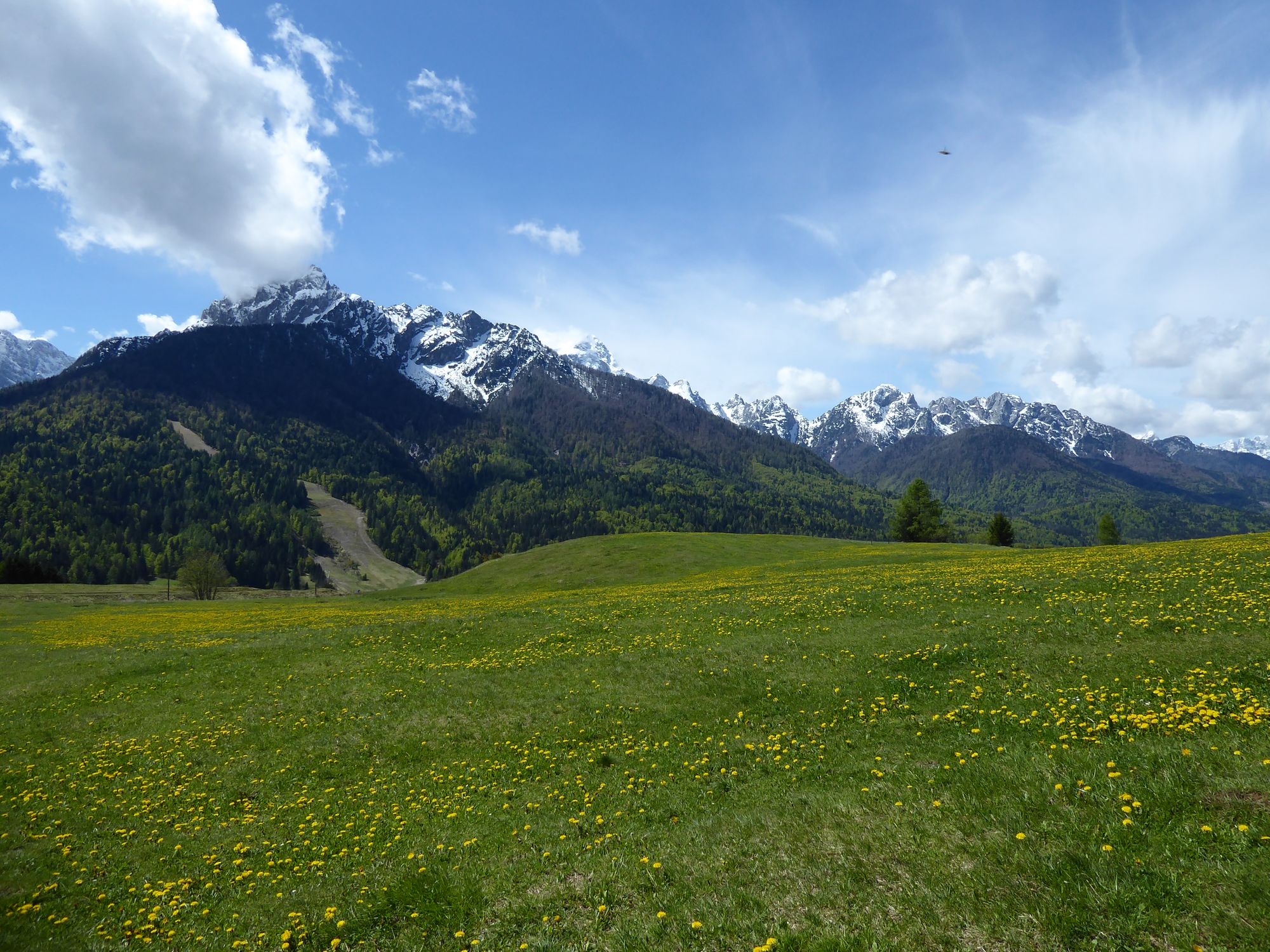
The trail soon led into the woods, and we followed the course of a fast-flowing stream that gushed and swirled over rapids and little waterfalls. The only other sounds were the twittering of birds, the snapping of twigs underfoot, and the occasional distant buzz of a chainsaw. In the shadier spots there were still patches of snow, a sight that became more frequent as we gained altitude.
The final part of the ascent was pretty gruelling, at least for amateurs like us. The trail veered off up a steep slope, where we had to scramble over tree roots and duck under huge trees that had fallen across the path. We huffed and puffed our way around more than twenty switchbacks, coiling back and forth through the forest, until finally we reached the top of the treeline and took in the views of the mountains to the south.
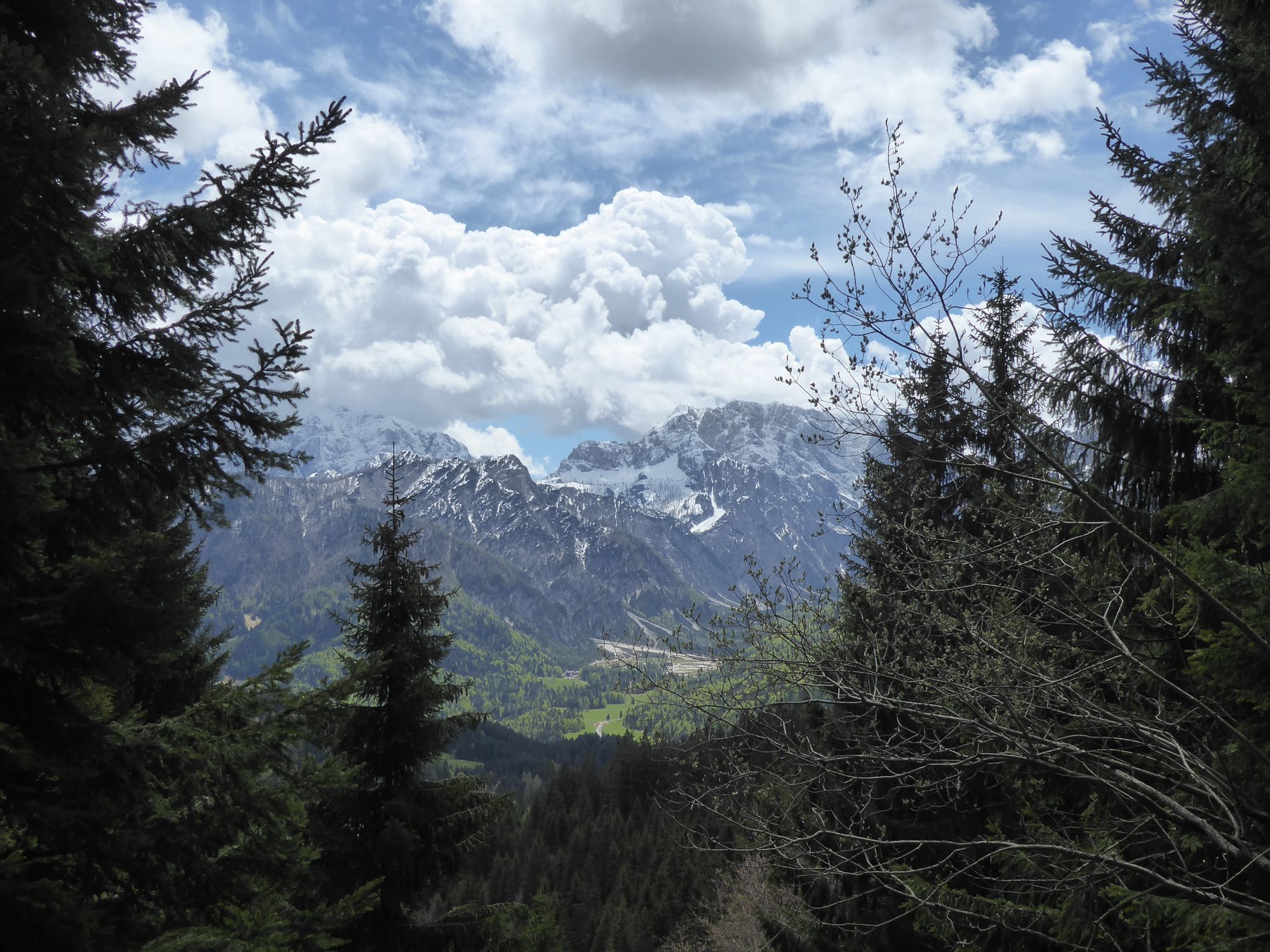
As we reached the summit a light drizzle began to fall, a harbinger of worse weather to come. There were three different monuments to mark the meeting of the three borders, inscribed with warm words of friendship between nations. I'd seen photos of this spot busy with tourists in the height of summer, but today there were only a couple of other people here, and they quickly melted into the forest, leaving us all alone at the top of the mountain. We strolled across the border into Austria, and sat down on a bench to eat our packed lunch. After a couple of minutes it started to rain more heavily, so we dashed for a nearby shelter and finished our picnic in Italy.
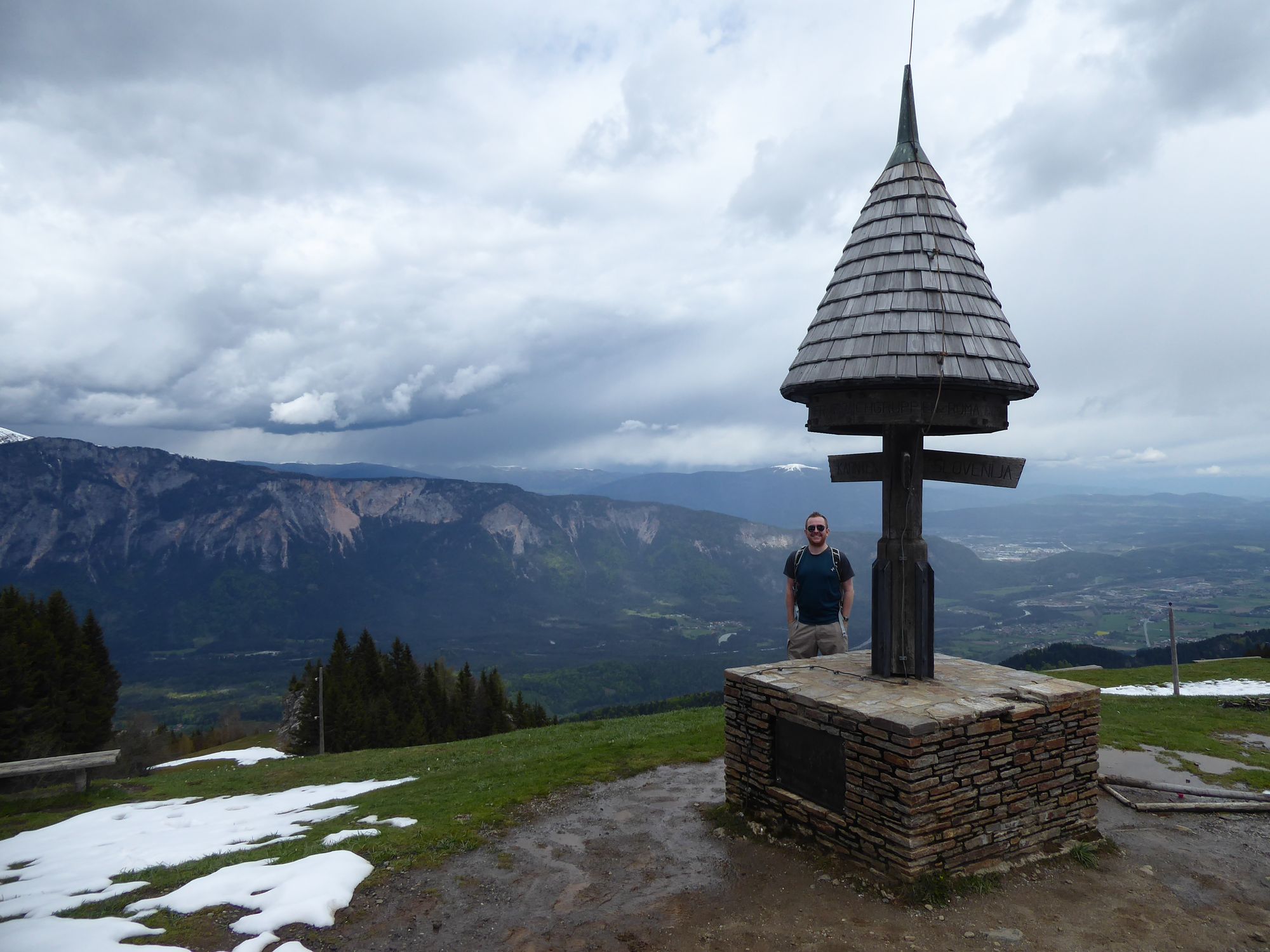
The road back down the mountain into Slovenia was thick with snow, deeper than we had expected in the middle of May, and the trail was slippery in places. To make matters worse, the rain turned to hail, and we scrambled into our waterproof trousers as the icy shower hammered down on us. We tried, in vain, to find a more sheltered path through the trees. At one point we had to use a couple of fallen branches as walking sticks, the steep slopes lower down the trail now slick with mud. It's fair to say the descent was a lot less enjoyable than the ascent.
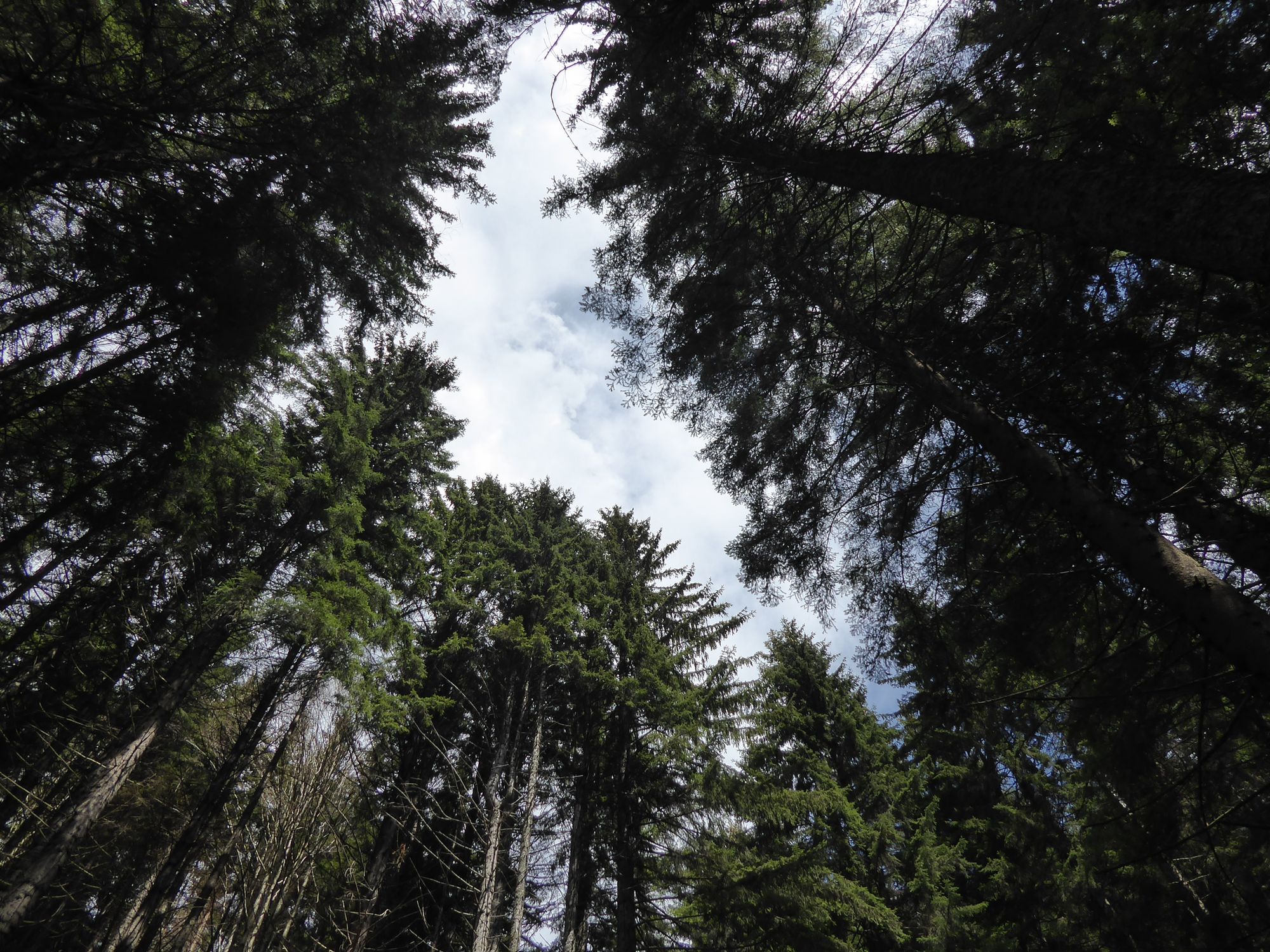
When we finally stumbled back into Rateče, sodden and mud-splattered, we made a beeline for the nearest inn, and warmed ourselves with a steaming cup of hot chocolate. We reflected on both our achievement - it's not often you visit three different countries on foot in a single day - and on the capricious nature of the weather up in the mountains.
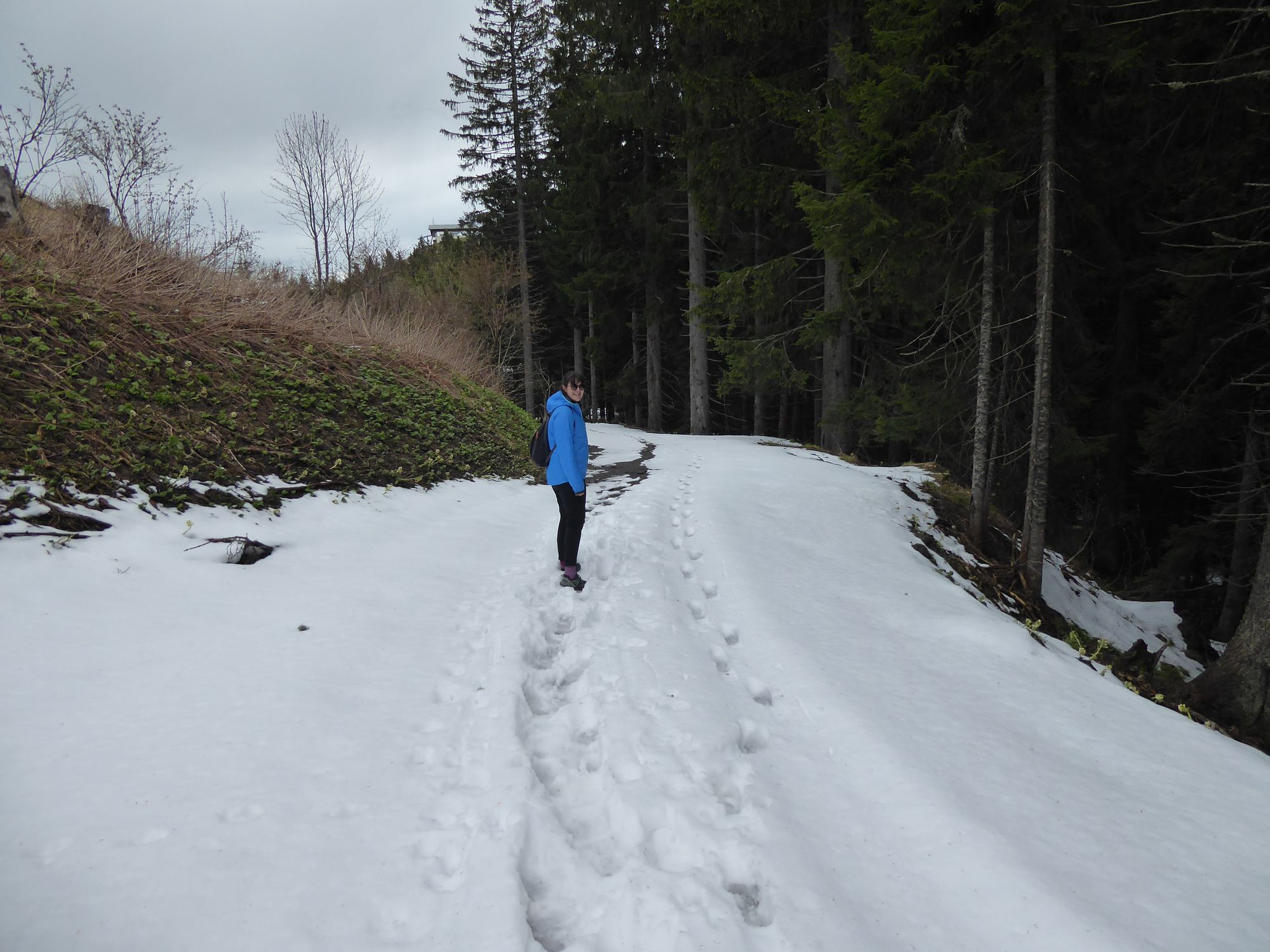
Zelenci and the Tamar Valley
On our final day in Kranjska Gora we headed out again towards Rateče and stopped at the tiny Zelenci nature reserve, just off the main road. Once again we seemed to be the only tourists in this part of Slovenia, as we wandered along a short path through the trees. We spotted a couple of tufty eared red squirrels watching us from the branches above, but otherwise the woods were still.
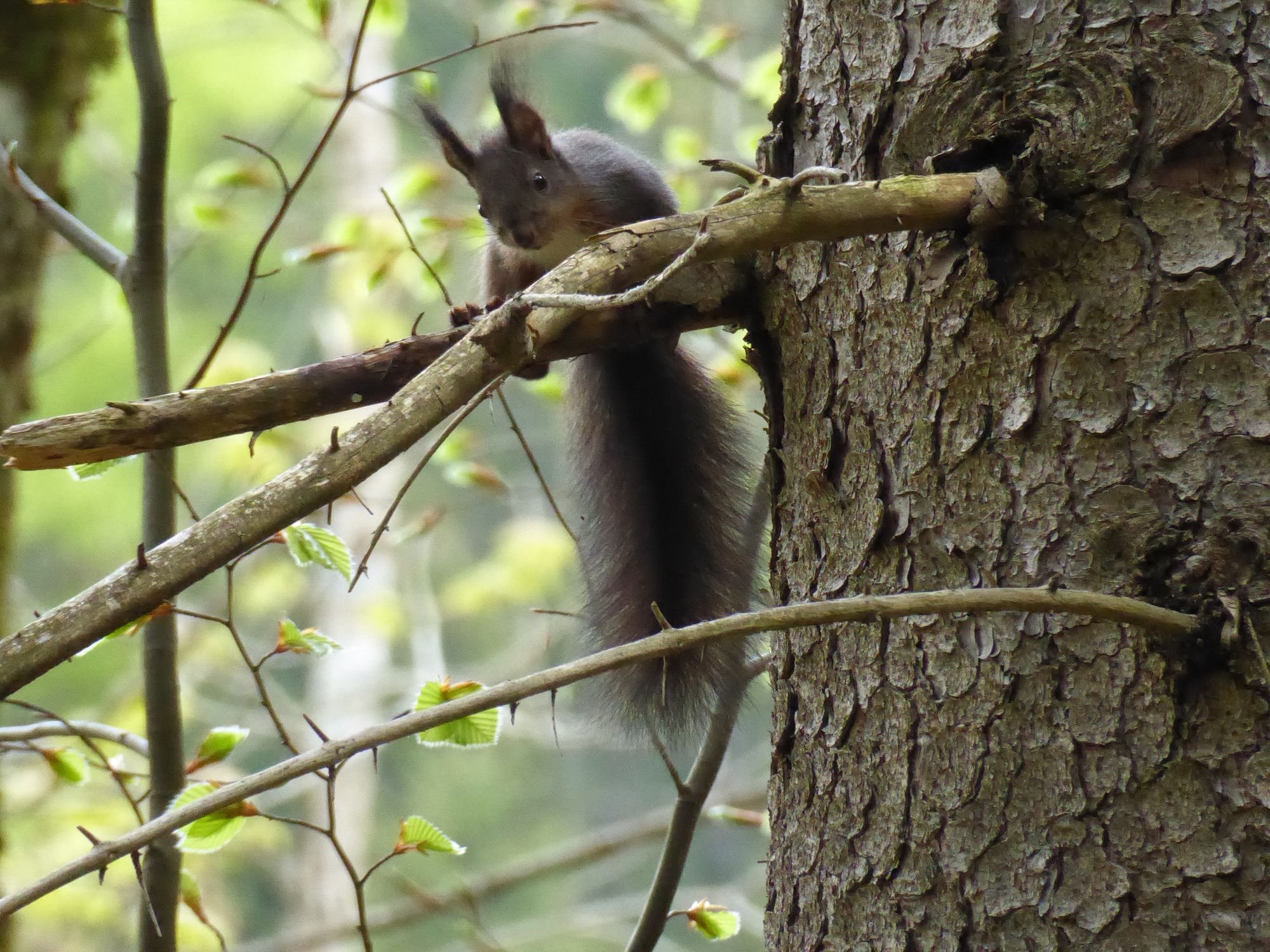
At the centre of the reserve was another of those dazzling turquoise lakes, small in size yet mesmerising to look at. A wooden boardwalk led around the edge of the lake, to a spot where we could see a spring bubbling up below the surface. This unusual phenomenon is caused by an underground stream emerging through porous chalk at the bottom of the lake, and the spring is considered to be the source of the Sava Dolinka river, which later turns into the Sava and flows through three capital cities: Ljubljana, Zagreb and Belgrade.

After our short stop-off at Zelenci we carried on along the Rateče road to the Planica Nordic Centre, where we parked the car. This sprawling ski facility is a popular tourist attraction, and it was busy with families enjoying a Sunday afternoon outing, but we were here for a hike rather than the ski jump.
We left Planica behind as we headed off along Trail 9 into the Tamar Valley, a much flatter and easier hike than the Tromeja route. A scree track led up a gentle gradient through a fragrant forest, with steep mountains on either side. We passed huge boulders dropped on the valley floor by an ancient glacier, and a few locals out walking their dogs.
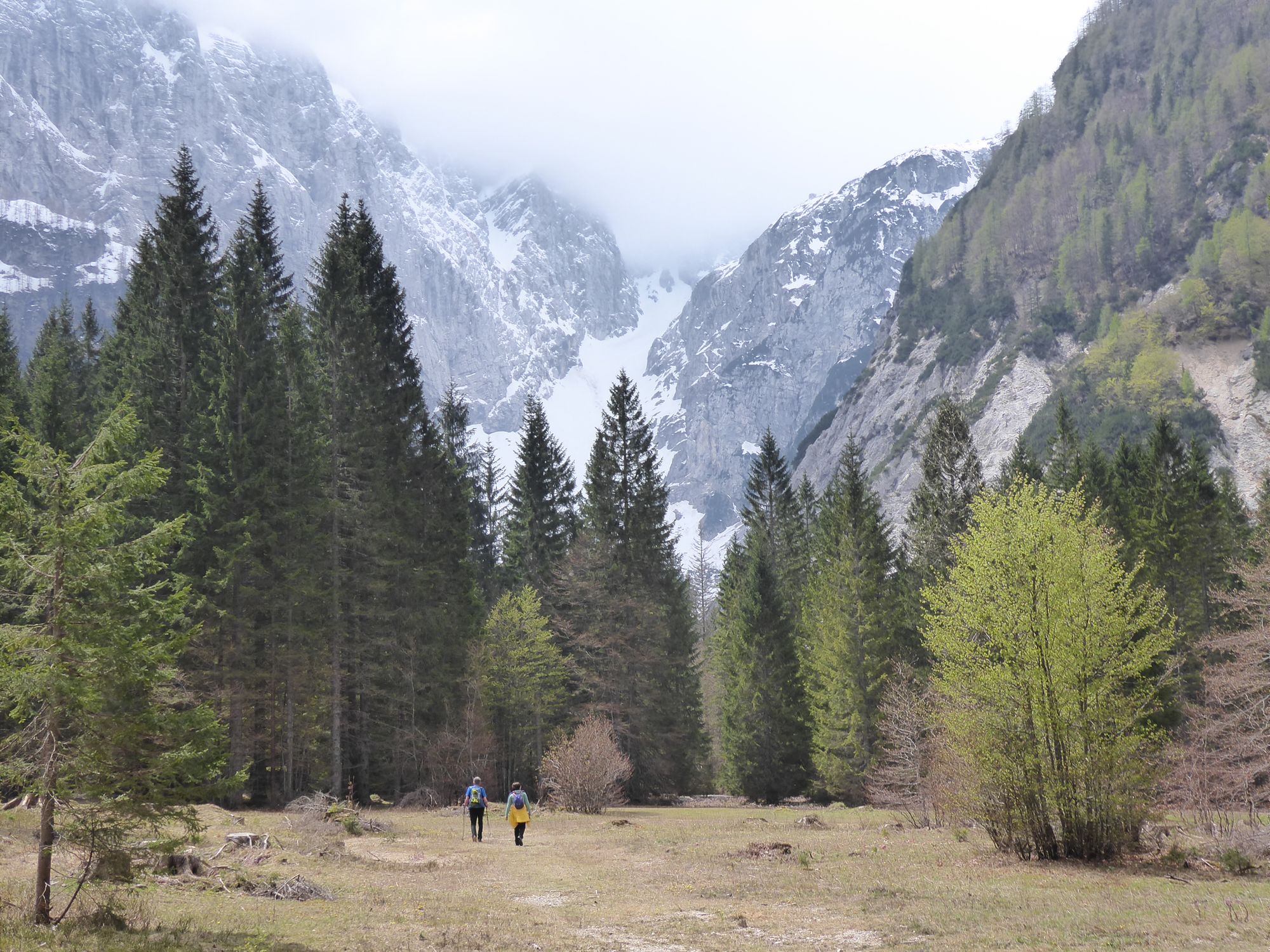
The Tamar is one of those valleys where the road eventually just stops, the mountains preventing any further progress. We reached a clearing where a waterfall tumbled down the valley side, and the ground was scattered with pink, yellow and blue wildflowers. A little chapel and a mountain hut sat at the end of the valley, with clouds gathering ominously overhead. We found a place to sit and tuck into our picnic lunch, one eye on the glowering grey skies, before making the return journey back through the forest. The threat of rain receded, and the returning sun warmed the back of our necks. Once again we were struck by the quiet and the emptiness of the countryside, the feeling of nature only lightly brushed by the touch of civilisation.
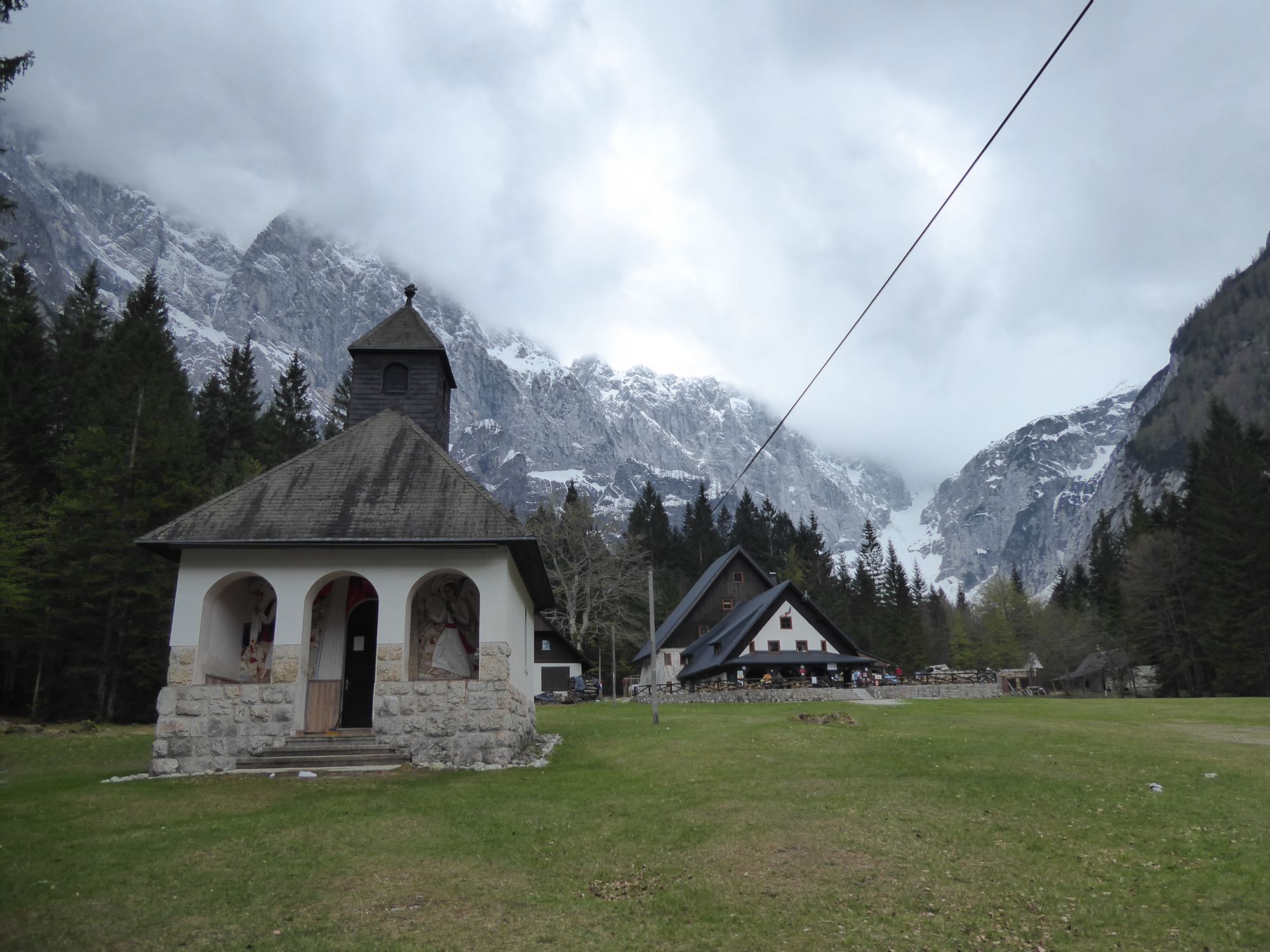
That evening, our last in Kranjska Gora, we returned to Lačni Kekec for dinner, our third visit in as many days. Once again the waitress brought us zaska, lard on toast. Then a hearty veal stew with žganci, a sort of stodgy buckwheat polenta, followed by a slab of apple strudel. Proper mountain food, the perfect fuel for hiking in the foothills of the Julian Alps.

